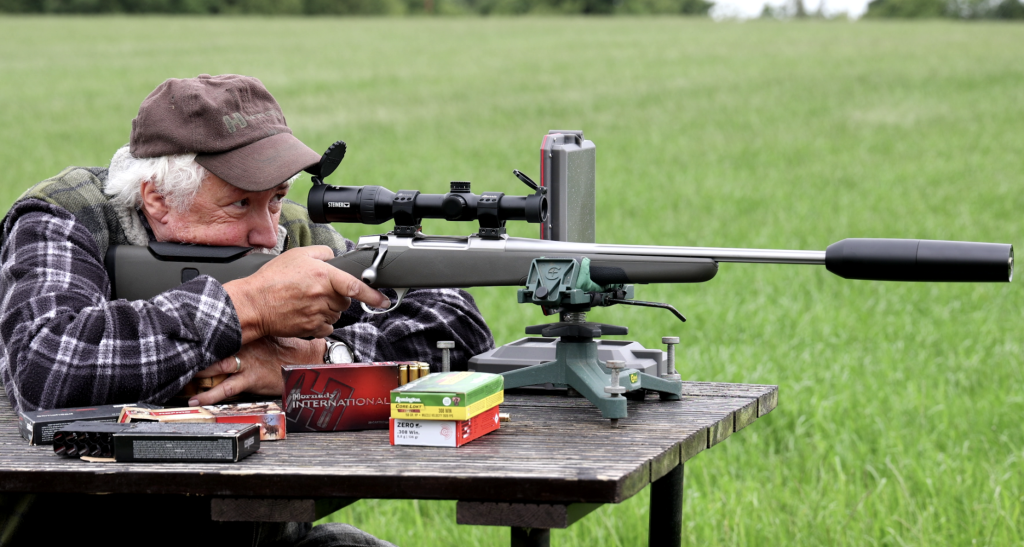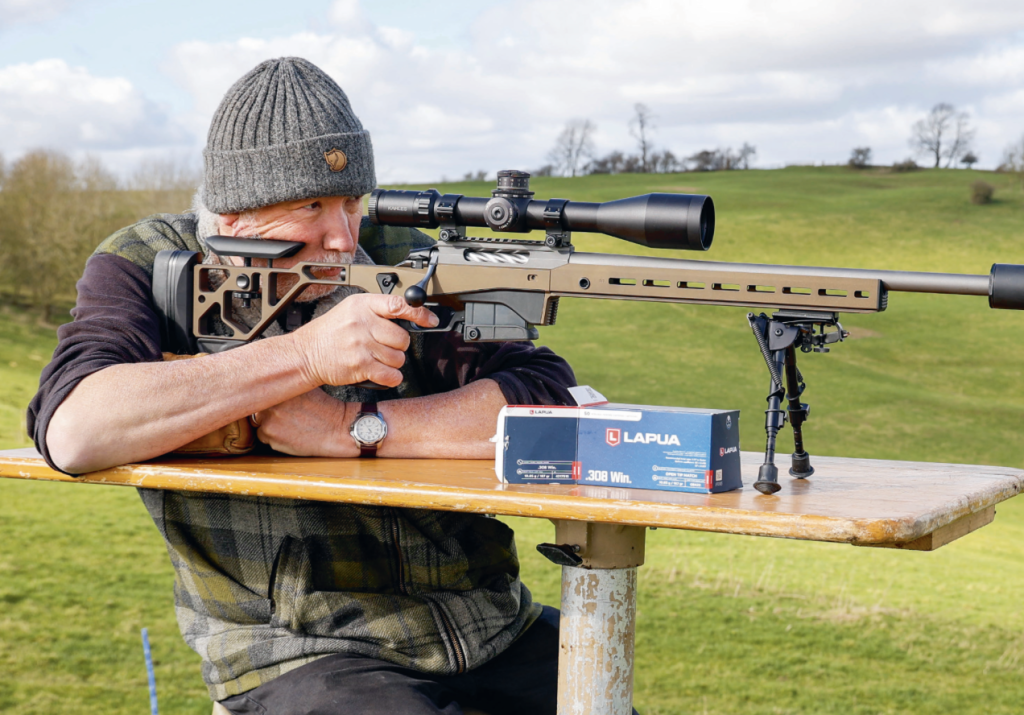Gun test: Mauser M18 Fenris in 6.5 Creedmoor
Chris Parkin considers the union of the Mauser M18 and the latest cutting-edge GRS stock design in this Mauser M18 Fenris gun review.
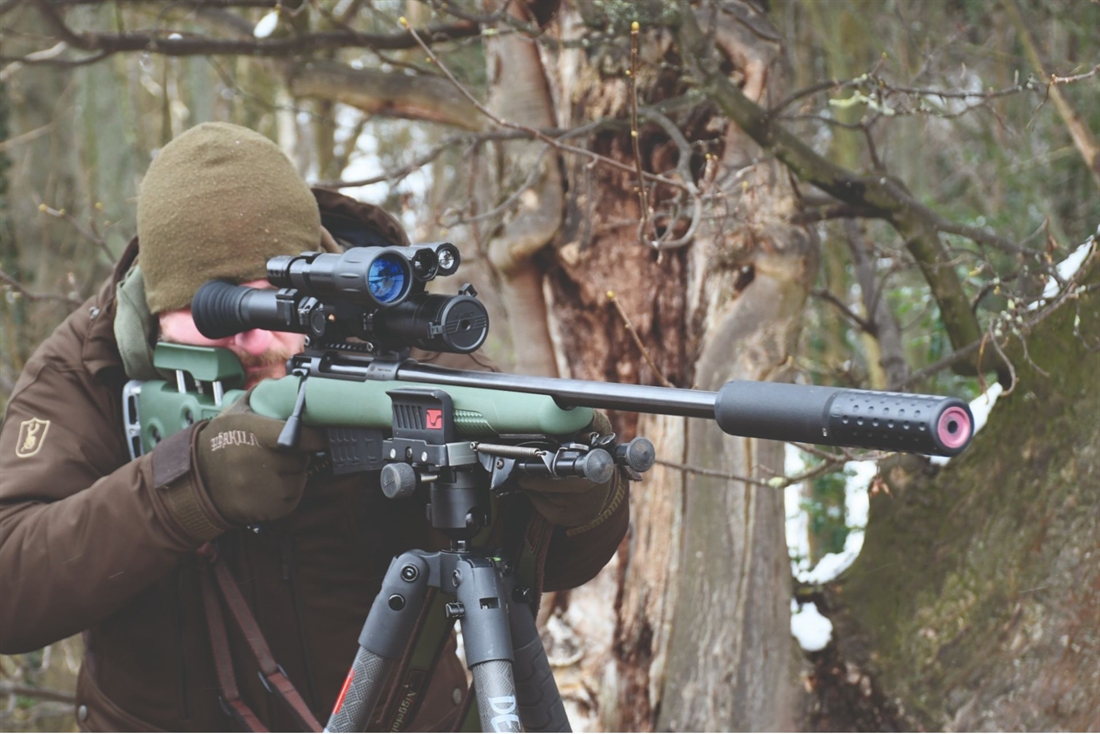
Mauser’s latest M18 variant is named the Fenris, with both the GRS stock and action adopting the name of the mythological Norse wolf. Alongside the other M18 variants, in both sporting and chassis formats, and using a variety of barrel options and calibres, the Fenris seems to be aimed more toward precision varminters and long-range hunters who are looking to benefit from an ergonomic stock design.
 Barrel
Barrel
The Fenris has a 22mm diameter, cold hammer forged barrel with a threadcap concealing its screw-cut 18×1 thread for a mod or muzzle brake. The barrel shows a burnished finish with a deep blue/black chemical finish that contrasts with the matt black finish of the steel action.
It is parallel in profile until meeting the action where the reinforce swells out to complete the 24”/610mm overall length, measured from crown to bolt face. Mauser’s M18 action uses a three-lug, push feed bolt with twin plunger ejector pins that automatically fling spent cases free. There is a single extractor claw recessed within the right lower lug to draw cases from the chamber.
There is a single raceway cut into the bolt’s 20.4mm diameter which runs along the bolt’s anti-rotation pin, which also acts as the bolt stop. A serrated lever on the left side of the rear action bridge needs to be pressed to lift it out of the bolt’s raceway, allowing it to be withdrawn from the receiver for cleaning or maintenance. Depending on your cheekpiece height, you may need to lower it to extract the bolt fully.
 Action
Action
This three-lug bolt requires a 60-degree lift to open and cock the action. Overall travel is 113mm on this single length action that can run cartridges from .223 up to .300 Win Mag. The bolt handle projects 90 degrees straight out from the shaft. Its 75mm overall length is completed with 30mm long, 19mm diameter teardrop to offer easy grip and fast operation of an action that’s hard to jam, even when deliberately provoked.
This 6.5 Creedmoor rifle has a 10-round polymer magazine plus one in the chamber if desired. In magnum chamberings, that lowers to 4+1. It’s a twin column unit so can be loaded quickly with minimal effort; cartridges simply clip into the top, and this can be done with the mag in or out of the gun. It’s also worth noting that in the Creedmoor a single round dropped through the ejection port onto the follower will feed directly into the chamber.
There is a recessed magazine release catch ahead of the magazine and a three-position safety catch completes the action’s controls. This is forward for fire; middle is safe with bolt operation and rearmost also locks the bolt as well as the trigger. it’s silent in operation when rolled carefully under the thumb. Trigger pull is adjustable from 1000-2000gr using an Allen key inserted into the root of the 10mm wide blade. The trigger is matt black with a crisp break. There is 2mm of overtravel measured at the blade’s tip after break with the review rifle averaging a breaking weight of 1,163g/41oz.
 Action/stock interface
Action/stock interface
The action is retained in the GRS stock with two 5mm Allen-head nuts spanning the magazine well. This is all incorporated within the stock’s overall injection moulding which is specifically tailored to an M18 action. This is made possible with action-specific injection moulding dies. It is not simply machined out of a blank stock like foam-filled composites, walnut or laminates.
The only type of bottom metal is a separate aluminium trigger guard which is internally bolted to the stock for a seamless and secure fit. The underside nuts have sprung Belville-type washers to remain locked in position, screwing onto the M6 studs that are attached to the cylindrical action’s underside.
This is slotted for a recoil lug behind the front stud and interlocks with an aluminium bedding block similarly bolted to the stock. You can see the internal finishing quality of the fibre composite injection moulding and the only other feature to mention is the magazine locking mechanism fastened within the stock’s magazine well.
It’s notable that when removing the action, there is no inherent stress apparent and when you re-tighten the stock/action together, nothing is bending into position, indicating the mouldings are straight and the bedding block is a good fit, with close tolerances bridging the polymer/aluminium/steel junction.
Although it’s not a switch barrel rifle, when taken in and out of the stock using a torque wrench, it maintained zero, which is always inspires confidence. Scope mounting is straightforward as the action is Remington 700 Long Action compatible and a Picatinny rail is fitted. This is screwed to the action in 4 places and offers 20 MOA inclination to enable greater long-range dialling.
 Ergonomics
Ergonomics
GRS’s Fenris stock follows the same asymmetric design and ergonomics featured in the bulk of their range. The mid-green colour contrasts nicely with the black of the rifle without becoming overwhelmingly fancy or ‘blackticool’. The forend is stiff and allows the barrel to fully free float in all scenarios.
The half round forend is 57mm wide offering plenty of grip. It has a slightly bell-shaped profile, so broader at the base than near the barrel channel and this gives a nice hand position without fear of your fingers/thumb drifting into contact with the barrel. The underside is almost flat but carries ribs for extra grip – ideal for a support bag.
As you can see, the finish on the grip and fore-end uses a honeycomb-like scale instead of chequering or stippling. This is a nice pattern as it adds real character, as well as an assured solid grip, yet on the underside it morphs into those lateral ribs. I wouldn’t say it’s artistic but I love the semi-organic way the textured patterns blend into each other offering subtly different handling characteristics.
Elsewhere, the stock is very delicately stippled throughout with no obvious moulding lines. From the action rearward, it becomes totally asymmetric with the characteristic GRS angled grip for the right-hand, enabling the thumb up or into a wrapped positioning. It is wonderfully comfortable in prone and supported positions.
Perhaps slightly less ‘pointable’ in a standing fast fire situation, but this gun is not really for that type of shooting and because the canted grip encourages your right elbow to drift outward without undue strain on your wrist, it is phenomenally comfortable and very stable when shot prone.
The right side of the grip offers a swollen area between index finger and thumb but at no detriment to bolt movement or speed, like a true thumbhole would be. Sadly, you can’t have a left hander and although possible, it’s not comfortable to shoot left-handed in anything other than an emergency.
The honeycomb texture swells into your palm on the lower right section of the grip yet blends with more significant stippling under the thumb area before blending back to more subtle stippling as it rises back into the comb. Reach to the trigger blade from the throat of the grip is 80mm.
 Adjustability
Adjustability
The comb shows an adjustable cheekpiece with 25mm of vertical travel, it’s also asymmetric and slots nicely under the cheekbone without excessive jaw displacement. Height adjustment is controlled in stages with a sprung button on the right side of the stock; a similar control also unlocks the recoil pad’s extension bars to adjust length of pull from 343-375mm.
All the mechanics are rigid aluminium/stainless steel to ensure no rattling. A LimbSaver recoil pad is fitted onto the aluminium at the rear, which is 23mm thick and medium/soft in texture. I normally don’t like recoil pads too soft, but this one is quite slim and moulds precisely to your shoulder pocket. It’s 44mm wide and 132mm tall, so spreads the recoil loads well, not a huge issue with a Creedmoor but a .300 Win Mag starts getting lively (and painful to some) if not well controlled. Recoil transit is linear with very little point of aim disturbance and the weight and balance of the gun allows effective bolt operation without undue disturbance.
 Set-up
Set-up
The rifle was supplied with a reliable 5-25×56 Minox scope and was virtually ready to shoot. It was simple to boresight with no significant windage displacement which would have indicated a poorly aligned Picatinny rail. It was shooting quite high though, which is no surprise with an inclined rail. I unlocked the zero-stop on the scope, dialled further down and had it ready to run in on some paper targets.
 Shooting
Shooting
I used a broad selection of ammunition ranging between 93 and 156 grains to trial the versatility of the long, heavy barrel with its 1 in 8” twist. All the ammunition used beat the MOA standard with 5 rounds, rather than 3, which most manufacturers state as a minimum requirement.
I found the heavy barrel was temperature stable although groups opened slightly when it got very hot. Magazine feed was reliable, as was ejection, and I found the trigger consistent for weight and delightfully positioned. Its curved blade allowed the finger to nestle in identical position every time and with little grip tension needed for a firm hold, I could totally concentrate on trigger pressure.
I have used quite a few GRS stocks in the past yet the Fenris seemed to rise to the top for me. It’s something about the feel and recoil dampening character that appeals. It is also rotationally stiff so even though quite tall in profile with a deep buttstock, any torque you apply to it is transferred directly to the bipod without any perceptible movement in the connecting fore-end.
The butthook allows for a good grip on the stock, which is helpful because the bolt appreciates forward pressure as you lower the handle. A gun without a butt hook would easily push out of your shoulder if simply resting on a supporting hand. With your left hand on the fore-end you have the grip to prevent the recoil pad being eased off your shoulder when closing the bolt.
The barrel’s length and weight maintain good velocity, ideal for maximising long-range potential, as does the inclined Picatinny rail. The barrels’ 22mm diameter adds stiffness, and mass to absorb and distribute thermal energy into the steel, slowing down the heating process. The barrel took a good 50 rounds through the bore to stabilise as it ran in, it has since been reliable and easy to clean.
| Ammunition | Bullet weight (grains) | Stated velocity on box (fps) | Average velocity recorded(fps) | Muzzle energy (ft-lb) | 100m 5 shot group (mm/inches) |
| RWS Evo Green | 93 | 3214 | 3246 | 2176 | 17/0.7 |
| Hornady V-max | 95 | 3300 | 3256 | 1237 | 13/0.5 |
| Hornady Outfitter GMX | 120 | 2925 | 2918 | 2269 | 15/0.6 |
| Norma Match | 130 | 2850 | 2794 | 2254 | 12/0.5 |
| Hornady TAP GMX | 140 | 2675 | 2624 | 2141 | 19/0.8 |
| RWS Speed Tip Professional | 140 | 2717 | 2742 | 2338 | 17/0.7 |
| Norma ORYX | 156 | 2560 | 2513 | 2188 | 22/0.9 |
 Conclusion
Conclusion
Mauser’s M18 has already proven itself to me in previous formats, so to see it fitted with a heavy barrel, long-range Picatinny rail and what I consider the ultimate GRS stock has struck a chord with me. I thoroughly enjoyed shooting this effective rifle that’s also value for money.
Tech specs
Calibres: .223 Rem., .243 Win., .270 Win., 6,5×55 SE, 6.5 PRC, 6,5 Creedmoor, .308 Win., .30-06 Spring,
7×57, 8×57 IS, 7mm Rem. Mag., .300 Win. Mag.
Capacity: 10+1, Magnum 4+1
Barrel Length: 610mm/24” 19 mm diameter, threaded 18×1
Length of Pull: 13.5”/343mm-14.75”/373mm
Trigger: Single stage adjustable from 1,000 – 2,000 g
Rifle Stock: GRS stock, fibreglass reinforced high tech polymer
Overall Length: 1110mm/43.25”
Total Weight: 4435gr/9lb 12.4oz
RRP: £1,499
Visit: Swillington Shooting Supplies / Blaser Group
Also used
Minox 5-25×56 long-range riflescope
www.blaser-group.com
Tier One scope rings
www.tier-one.eu
PARD DS 35-70 and BOG Death Grip tripod
www.sportsmanguncentre.co.uk
Wildcat Evolution Sound Moderator
www.wildcatmoderators.co.uk
Ammo
Hornady
www.edgarbrothers.com
RWS/Norma
www.ruag.co.uk
Related Articles
Get the latest news delivered direct to your door
Subscribe to Rifle Shooter
Elevate your shooting experience with a subscription to Rifle Shooter magazine, the UK’s premier publication for dedicated rifle enthusiasts.
Whether you’re a seasoned shot or new to the sport, Rifle Shooter delivers expert insights, in-depth gear reviews and invaluable techniques to enhance your skills. Each bi-monthly issue brings you the latest in deer stalking, foxing, long-range shooting, and international hunting adventures, all crafted by leading experts from Britain and around the world.
By subscribing, you’ll not only save on the retail price but also gain exclusive access to £2 million Public Liability Insurance, covering recreational and professional use of shotguns, rifles, and airguns.
Don’t miss out on the opportunity to join a community of passionate shooters and stay at the forefront of rifle technology and technique.



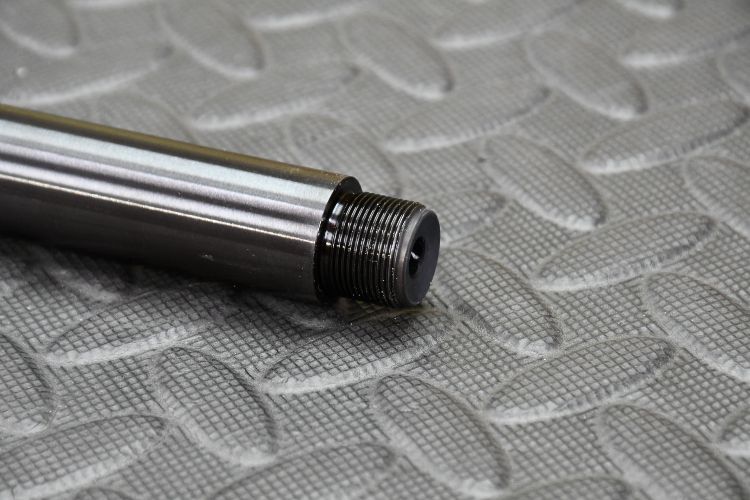 Barrel
Barrel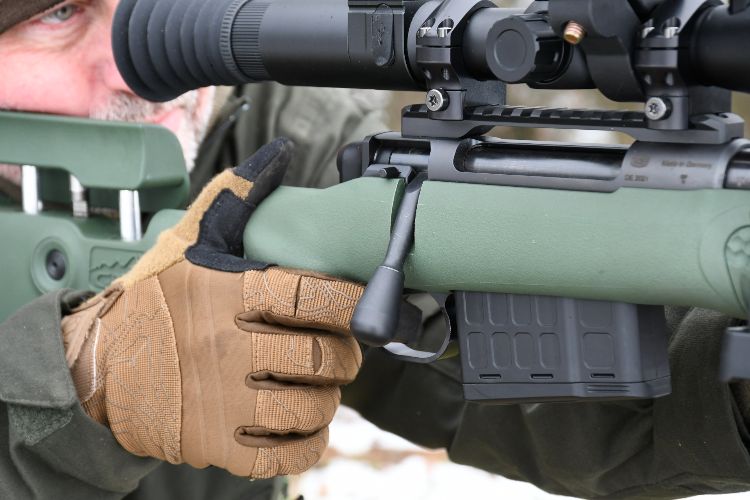 Action
Action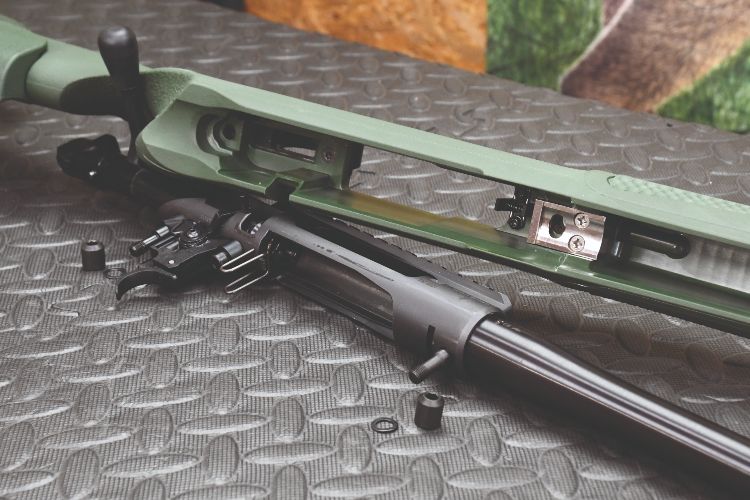 Action/stock interface
Action/stock interface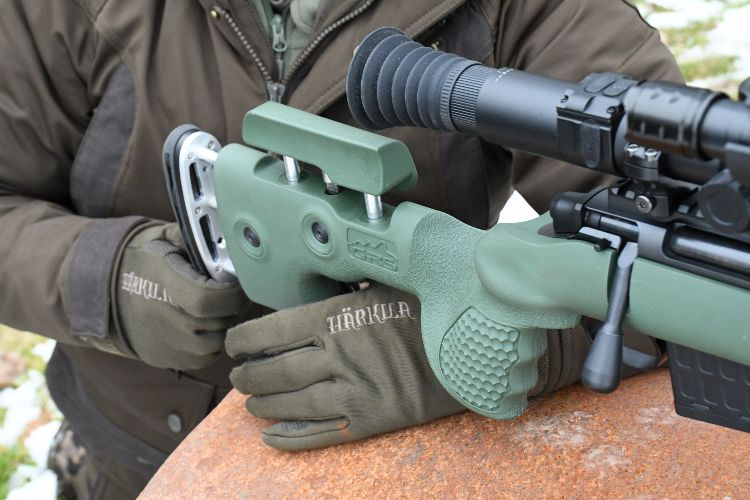 Ergonomics
Ergonomics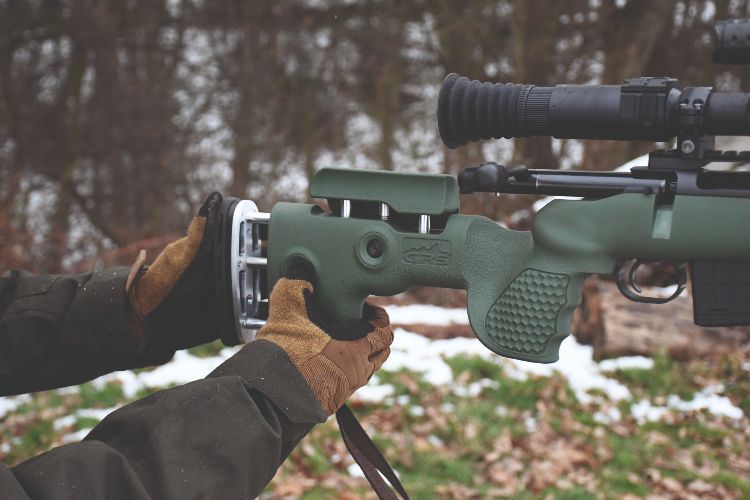 Adjustability
Adjustability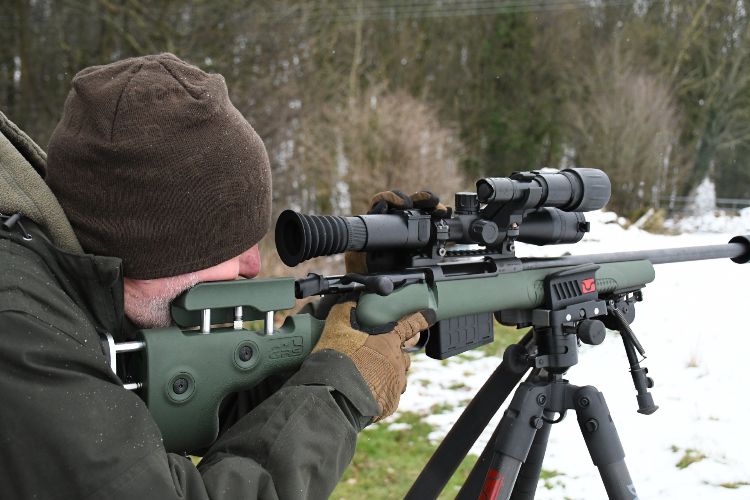 Set-up
Set-up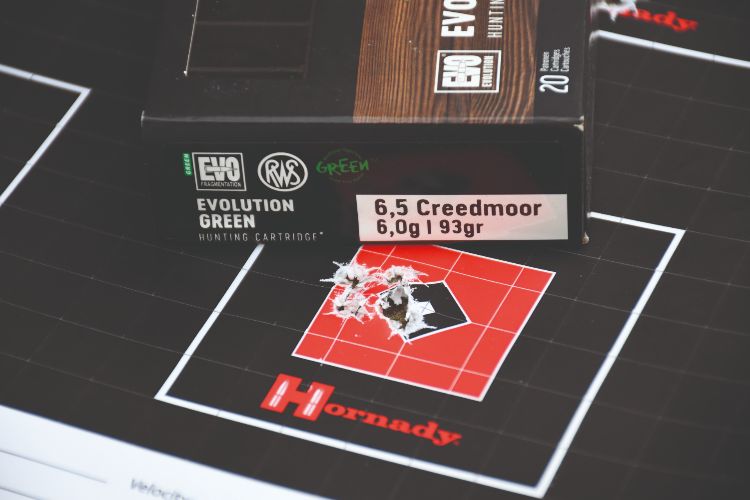 Shooting
Shooting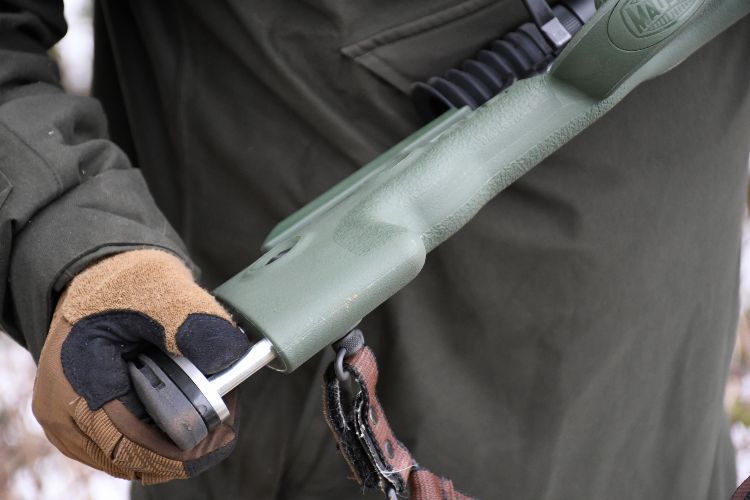 Conclusion
Conclusion